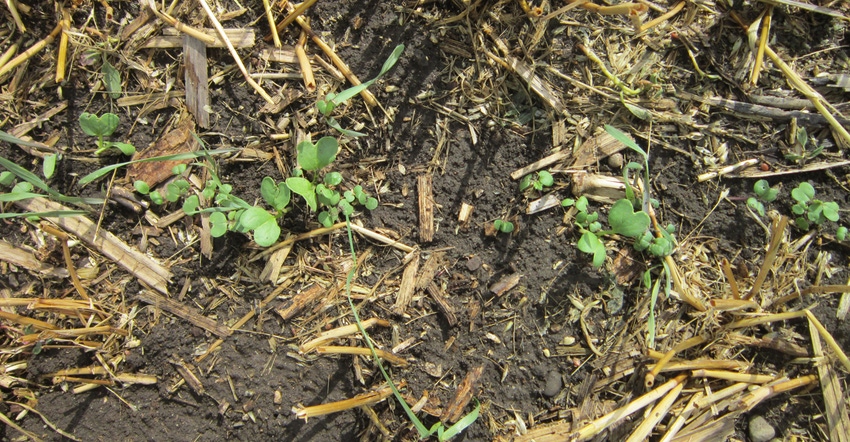May 9, 2018

By Amanda Kautz and Don Donovan
At one time, almost every farmer across Indiana raised wheat. For many reasons, farmers have moved away from raising wheat to mostly a corn-soybean rotation. Wheat production has become more site-specific based on soils, ability to double-crop soybeans or the need for straw. Now some farmers across the state are bringing wheat back into their rotation to provide plant diversity and to add to their options for using cover crops.
Also, after wheat harvest is a great time to install tile or work on grassed waterways to ensure proper vegetation establishment before winter.
No matter why you choose to plant wheat, doing so also offers interesting options to plant cover crops after wheat harvest. This is especially true in the northern part of the state, where most farmers don’t try to double-crop soybeans after wheat.
Weeds or cover crops?
The northern half to two-thirds of Indiana has significant challenges in trying to double-crop soybeans after wheat harvest due to the shorter growing season. Farmers should ask themselves: Weeds or cover crops — which one is going to benefit me more next spring?
Wheat fields left fallow after harvest tend to be an open invitation for weeds to come in and establish. Think about it. Mother Nature wants the soil covered all the time. If a cover crop is not planted, something else, most likely a weed, will fill that void created by bare soil during the growing season.
Post-wheat harvest is a time when you can plant cover crops. You can choose what grows in the field and take advantage of the remaining summer growing season while maximizing soil health benefits.
Typically, wheat harvest is in mid-July, giving a farmer in northern Indiana plenty of time to plant a cover crop mix that includes both warm-season and cool-season species. Why both?
Summer annuals such as sorghum sudangrass, sunflowers and sunn hemp build above- and belowground biomass quickly. Cool-season species such as cereal rye, radish and clovers maximize root growth after frost. Overwintering species like cereal rye and some clovers keep living roots growing in the soil until next spring.
Kautz and Donovan are district conservationists with the Natural Resources Conservation Service. They write on behalf of the Indiana Conservation Partnership.
You May Also Like




